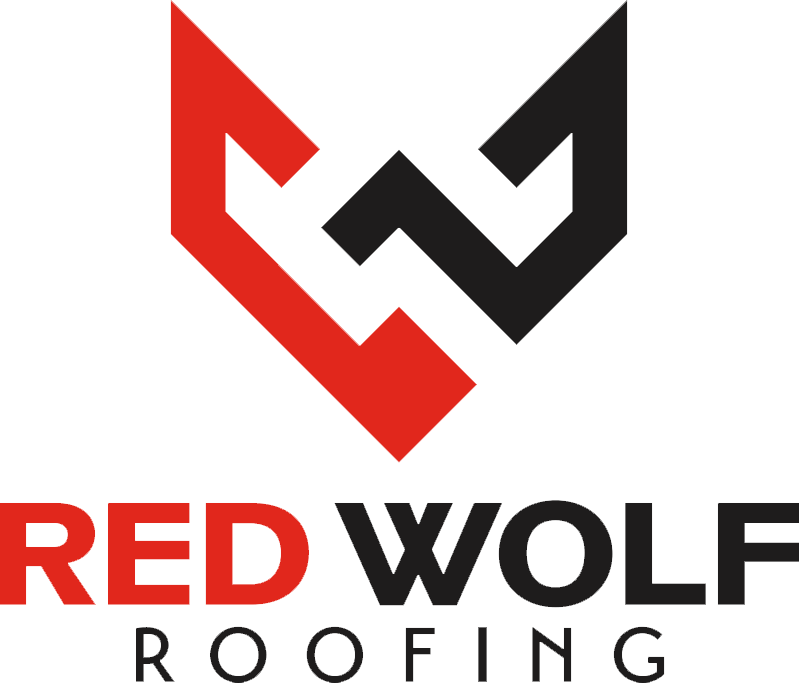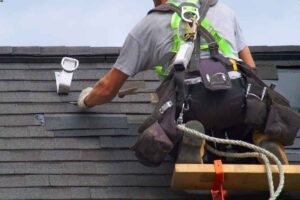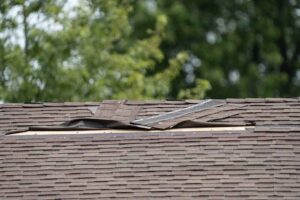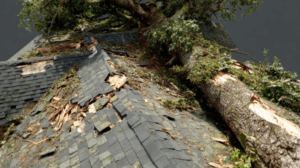Step into your attic on a hot North Carolina afternoon, and it feels like stepping into a sauna. The air is thick, the temperature stifling, and it hits you fast—the kind of heat that makes you want to back out immediately. But that heat isn’t just uncomfortable; it’s destructive.
Every summer, we at Red Wolf Roofing see the same story play out across the Sandhills. Homeowners call about warped shingles, curling rooflines, or musty smells in the attic. And when we take a look? Nine times out of ten, the problem isn’t the shingles themselves—it’s what’s happening underneath.
When a roof ridge vent fails—or isn’t doing its job properly—attic temperatures can soar well above 130°F. That trapped heat cooks your roof from the inside out, damaging shingles, insulation, and even the structural wood over time.
The solution starts with understanding how ridge vents work, what causes them to fail, and how a few simple maintenance steps can keep your home cooler, stronger, and far more efficient.
The Role of Ridge Vents in a Healthy Roof System
Your roof isn’t just a weather barrier—it’s a system. And like any system, it needs airflow to function properly. Ridge vents are the unsung heroes of that design. They sit at the very top of your roof—along the ridge line—and allow hot, humid air to escape from your attic while drawing in cooler air from soffit vents below.
When everything works correctly, the process is simple and effective:
- Cool air enters through intake vents (usually at the eaves).
- Heat rises naturally and escapes through the ridge vent.
- Air circulation keeps the attic temperature closer to the outdoor temperature.
This balance prevents moisture buildup, reduces heat stress on your shingles, and keeps your home more comfortable overall. But when that flow gets interrupted—by clogging, poor installation, or damage—the consequences can be costly.
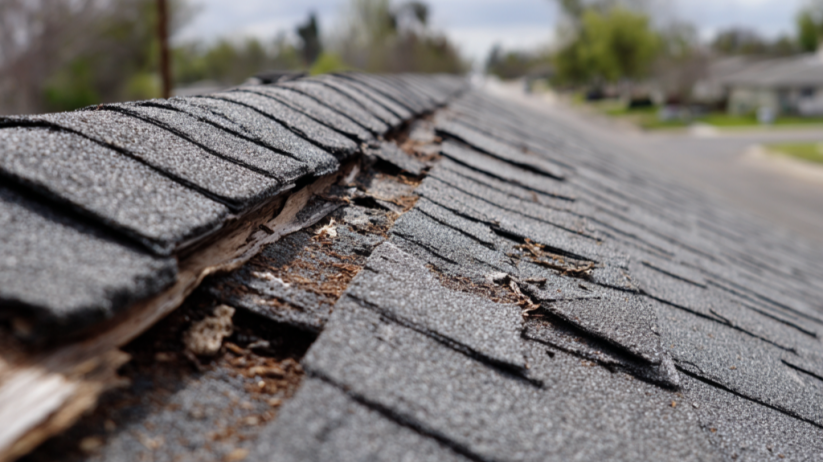
What Happens When Ridge Vents Fail
A ridge vent failure doesn’t always look dramatic. There’s no loud noise or flashing light to warn you. Instead, it’s a slow, quiet process—one that starts in your attic and ends on your roofline.
Here’s what can happen when your ridge vents stop doing their job:
- Excessive attic heat: Without ventilation, attic temperatures can skyrocket. That heat radiates downward, forcing your air conditioner to work overtime.
- Shingle damage: Heat trapped beneath your roof accelerates shingle aging, causing them to dry out, curl, and crack long before their time.
- Warped decking: Extreme heat can warp or delaminate the wooden boards beneath your shingles, compromising structural integrity.
- Mold and mildew growth: Poor airflow also traps moisture. When humid air can’t escape, it condenses on cool surfaces—creating perfect conditions for mold.
- Ice dams in winter: Even in mild North Carolina winters, attic heat loss can cause uneven melting and refreezing along the roof’s edge, leading to ice dam formation.
- Higher energy bills: A hot attic radiates heat into your home, driving up cooling costs and reducing comfort year-round.
These issues don’t appear overnight. But by the time you notice higher bills, discolored shingles, or musty smells, your ridge vent system may already be compromised.
The Common Causes of Ridge Vent Failure
Ridge vents fail for a variety of reasons—some due to weather, others to poor installation or maintenance. Understanding these causes helps you spot and fix issues early.
- Clogging from debris: Leaves, dust, and insulation can block airflow through the vent, especially if filters or baffles weren’t installed properly.
- Improper installation: If the vent isn’t centered or the opening beneath it is too narrow, it won’t move enough air to regulate temperature.
- Inadequate intake vents: Ridge vents need air coming in from below to work. Without proper soffit or eave ventilation, the system can’t “breathe.”
- Storm or wind damage: High winds can loosen or bend the vent cap, allowing water infiltration or reducing airflow efficiency.
- Animal nesting: Birds, squirrels, and insects often find ridge vents an inviting entry point. Once inside, they can block airflow or damage vent screens.
- Aging and wear: Over time, UV rays and temperature swings can cause vent materials to crack, warp, or pull away from the roof decking.
We’ve replaced vents that were completely sealed shut by old paint, insulation overspray, or improper roofing overlays. In every case, homeowners had no idea—until the attic started cooking.
How Attic Heat Affects Your Entire Home
It’s easy to think of attic ventilation as something that only affects your roof, but the reality goes much deeper. A poorly ventilated attic can throw off the temperature balance throughout your entire home.
When hot air gets trapped up top, it radiates downward, heating ceilings and ductwork. That means your air conditioner has to work harder and longer to maintain comfortable temperatures.
In addition, trapped moisture from poor ventilation can seep into insulation, reducing its effectiveness. That dampness can also contribute to indoor air quality problems, especially if mold spores find their way through vents or air returns.
If you’ve ever wondered why your upstairs rooms stay hotter than the downstairs—no matter how much you run the A/C—your ridge vents may be part of the problem.
How to Spot Ridge Vent and Attic Ventilation Problems
You don’t have to climb onto your roof to know something’s wrong. There are plenty of signs that point to poor ventilation or ridge vent failure:
- High attic temperatures: If your attic feels significantly hotter than the outdoor air (especially at night), airflow isn’t balanced.
- Wavy or curled shingles: Heat buildup beneath shingles shortens their lifespan and causes visible distortion.
- Discolored or damp insulation: Moisture condensation means air isn’t escaping as it should.
- Peeling paint on fascia or trim: Trapped heat and moisture can work their way outward, damaging nearby surfaces.
- Moldy smells or dark streaks: These are clear signs of humidity issues and poor airflow.
- Uneven indoor temperatures: Rooms near the attic get hotter or colder faster than the rest of the house.
- Increased energy bills: When the attic traps heat, your HVAC system can’t catch a break.
If you notice more than one of these symptoms, it’s time to schedule an inspection before the damage spreads further.
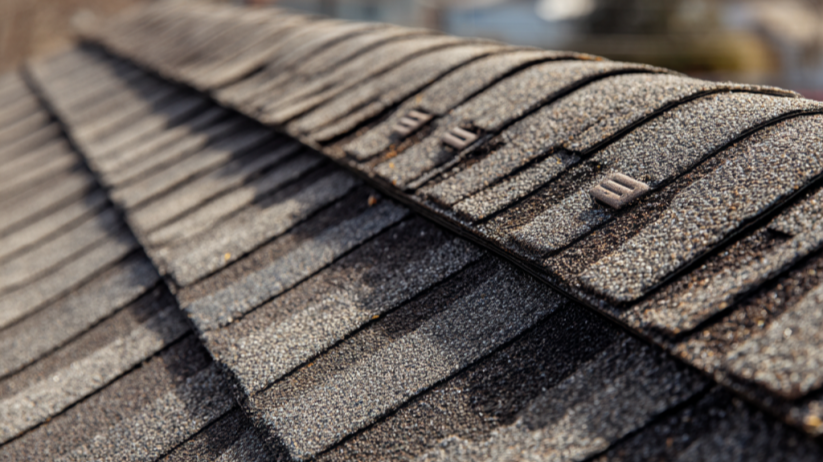
How Red Wolf Roofing Fixes Ventilation and Ridge Vent Problems
When it comes to fixing ridge vent and attic ventilation issues, the right solution depends on the root cause. At Red Wolf Roofing, we approach each home as a unique system—because no two attics or roof designs are exactly alike.
Here’s how we typically handle ventilation problems for North Carolina homeowners:
- Full attic inspection: We check airflow patterns, intake/exhaust balance, insulation health, and any visible moisture or mold damage.
- Ridge vent evaluation: We look for clogs, damage, or improper installation that may be blocking airflow.
- Soffit vent assessment: Intake vents are just as critical as the ridge vent itself. Without them, the system can’t circulate properly.
- Moisture testing: Using infrared or humidity sensors, we identify areas where moisture may be trapped.
- Repair or replacement plan: We’ll recommend repairs, upgrades, or new vent systems tailored to your roof’s design and local weather conditions.
We often install modern ridge vent systems with built-in baffles and filters that resist wind-driven rain and debris—perfect for the Sandhills’ mix of heat, humidity, and seasonal storms.
Preventing Future Failures
Once your ridge vents are working properly, keeping them that way comes down to a few maintenance habits:
- Clean your soffit vents annually: Use compressed air or a soft brush to clear dust, dirt, and cobwebs.
- Trim back nearby trees: Leaves and branches can drop debris or block airflow along the ridge line.
- Inspect your attic twice a year: Look for damp insulation, hot spots, or musty odors.
- Schedule roof inspections after major storms: High winds can shift vents or damage flashing without visible leaks.
- Avoid blocking vents with insulation: When adding attic insulation, make sure not to cover intake vents or restrict airflow.
Small, consistent care keeps your ventilation system running smoothly—and saves you from costly roof and energy repairs down the line.
Keep Your Roof (and Attic) Breathing Right
Your roof ridge vent might not get much attention, but it’s one of the hardest-working components in your home’s defense system. When it fails, the results are more than just a hot attic—they’re higher bills, damaged shingles, and a shorter roof lifespan.
The good news? Ventilation issues are fixable—and preventable—with the right expertise.
At Red Wolf Roofing, we specialize in diagnosing and repairing ventilation systems designed for North Carolina’s unique heat and humidity. We’ll inspect your roof ridge vent, attic airflow, and insulation to make sure everything’s working as it should.
Don’t wait until you’re sweating through another summer wondering why your attic feels like an oven. Contact Red Wolf Roofing today to schedule your inspection. We’ll help your roof breathe again—so your home stays cool, efficient, and protected all year long.
